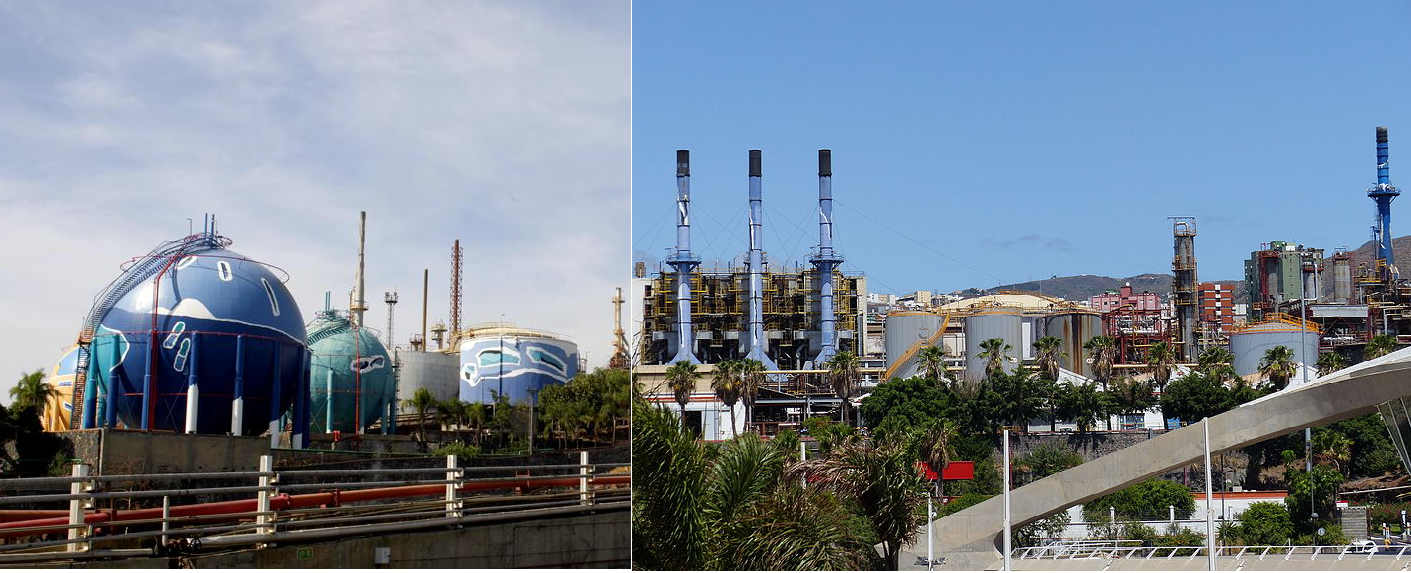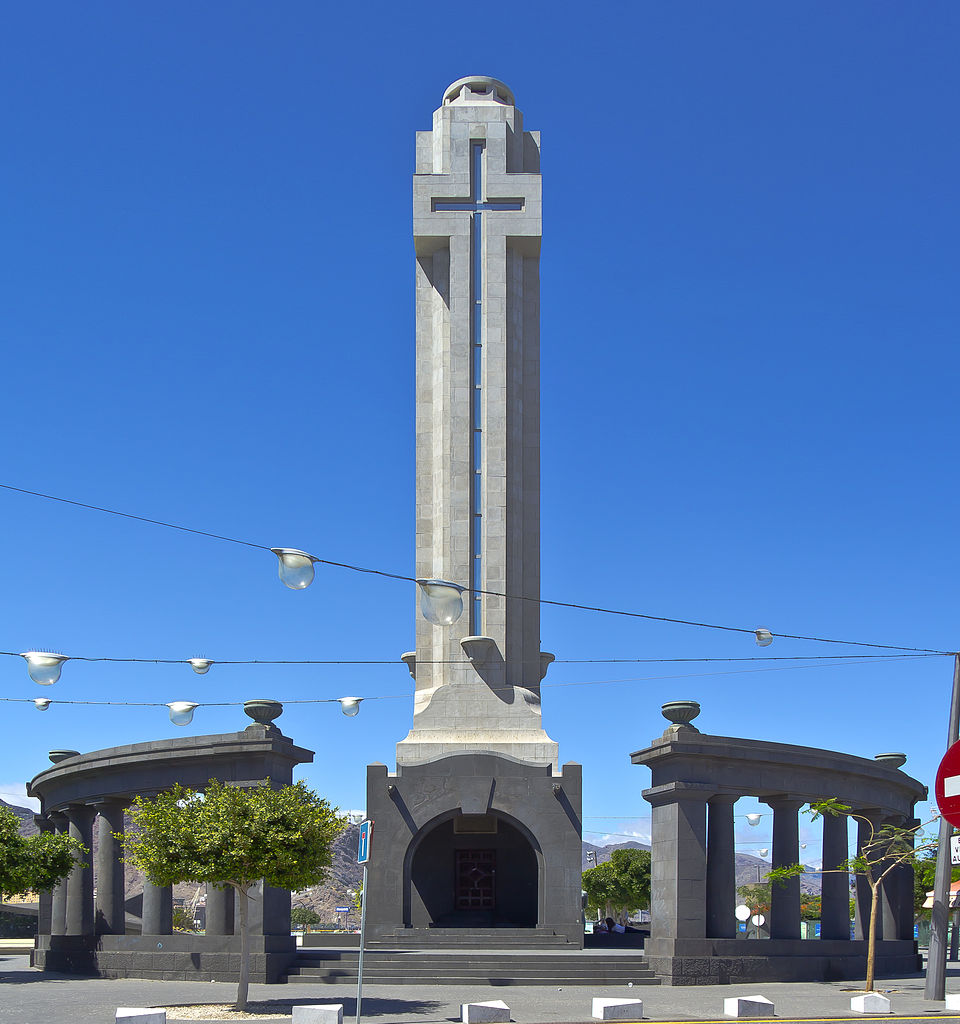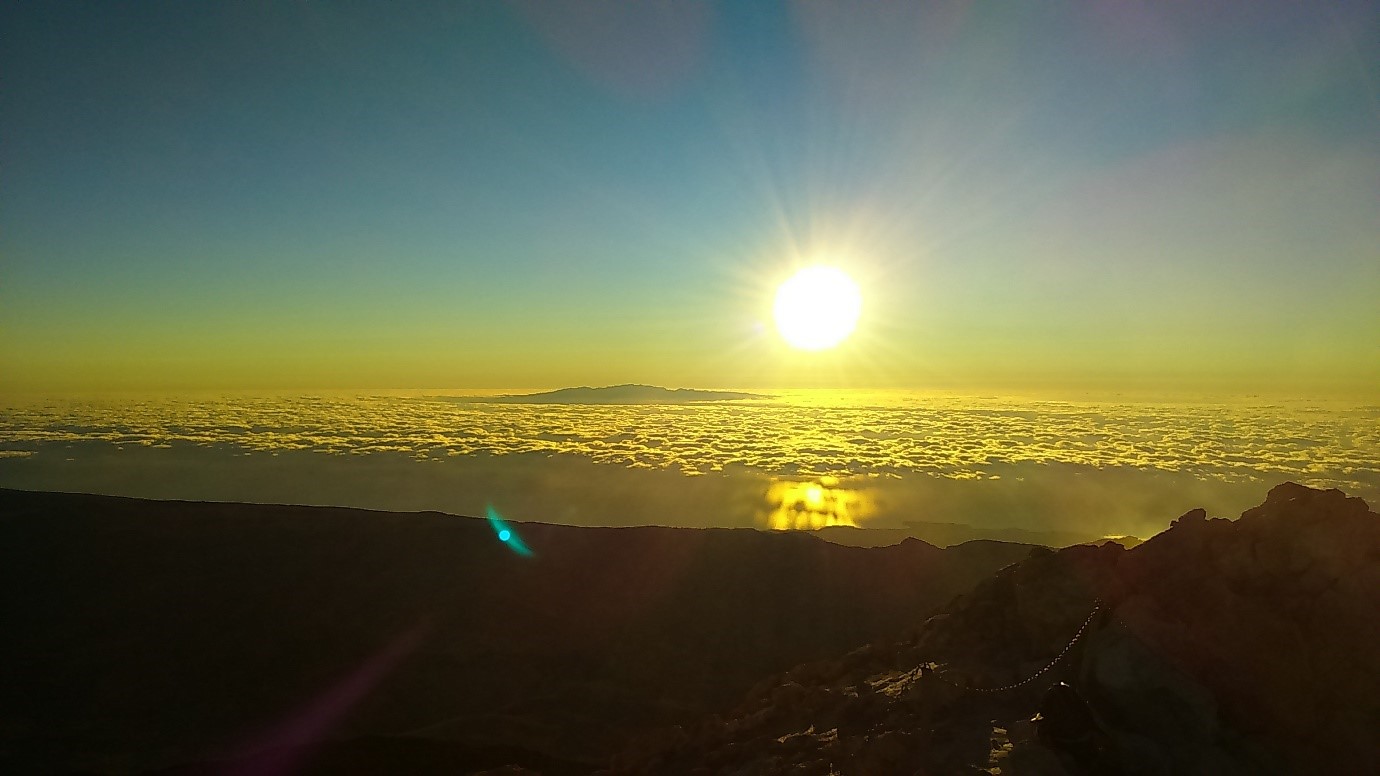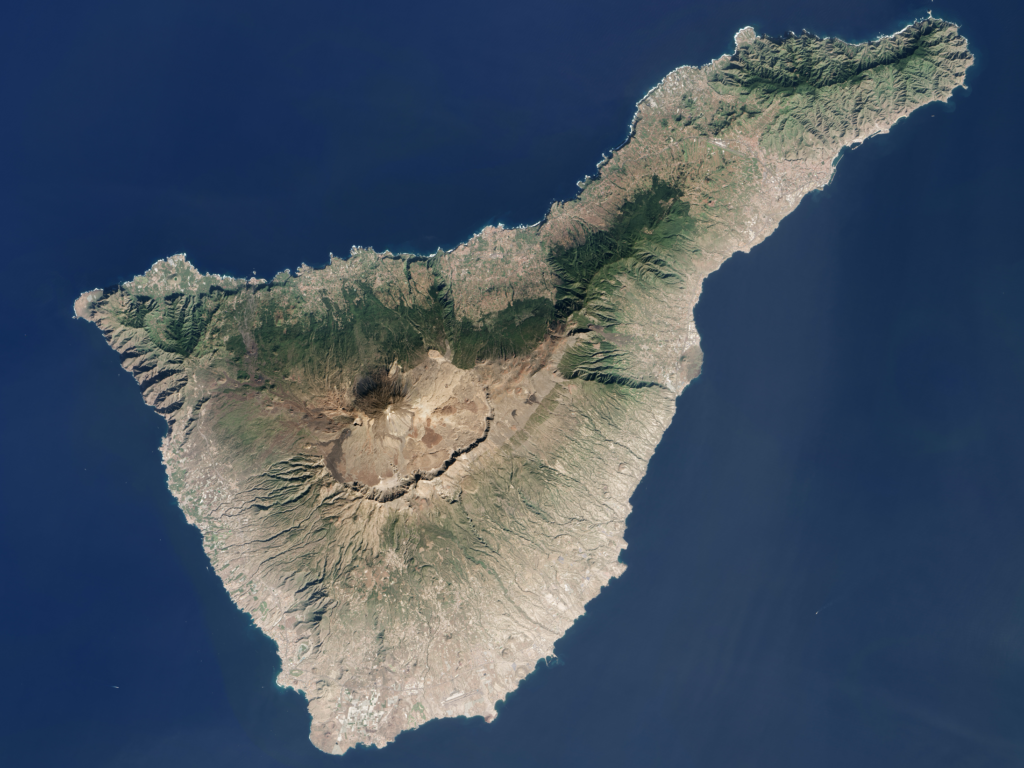Chris Waite, University of Warwick
When Alexander von Humboldt reached the peak of El Teide in June 1799, he described how the ‘prodigious transparency of the atmosphere’ contributed to ‘the magical effect’ of Tenerife’s landscape1. Humboldt was on route to what would become an extraordinary Latin American expedition that saw him scale higher peaks than the 3,718 metres of El Teide. Andrea Wulf’s 2015 biography of Humboldt describes the adventurer’s 1802 ascent of Chimborazo in the Andes as an epiphany that brought together everything he had experienced earlier in his trip:
“Everything that he had ever observed fell into place […]. Nature, Humboldt realized, was a web of life and a global force”2
Humboldt got within 300 metres of the 6,283 metre summit of Chimborazo, and despite his exhaustion, bleeding feet and altitude sickness, was formulating ideas that would become his new interconnected concept of nature. As Wulf suggests ‘Humboldt gave us our concept of nature itself’3 – a potentially fragile ‘web of life’ where nothing can be studied in isolation, where ‘everything hangs together’4. These ideas are threaded through our current understandings of climate change.
On approaching Santa Cruz de Tenerife via the TF-1 motorway that leads from the airport in the south, the sight of the Refinería is a curious one. I’m offered glimpses of chimneys and spherical storage tanks, painted in pastel shades of blue, peeking through the dense urban-industrial landscape. It is hard to distinguish the boundary of the refinery: it has now been enveloped by the municipal tangle and palm trees of the city of Santa Cruz. And there was the smell – heady, strangely floral, and – it is hard not to use the word – toxic. Which I didn’t expect: in terms of actual refining activity this site has been idle since 2015. The refinery currently provides storage and distribution facilities for CEPSA (Compañía Española de Petróleos S.A.U) and still produces asphalt. I pass by an open air olympic-size swimming pool, which for a moment seems to be part of the refinery. I wonder how different my olfactory experience would be if the refinery was at full capacity – some 92,000 barrels per day. I’m also struck by the parallel between Humboldt’s description of the ‘transparency of the atmosphere’ on El Teide and a strangely beautified refinery, cleansed by the shimmering blue sky. Searching this sky, I cannot find a trace of El Teide, the highest point on Spanish territory. I later learn it is hidden from view by the massive crater wall of Las Cañadas. I recall Wulf highlighting Humboldt’s understanding of nature as requiring a perspective from above5 that would allow all connections to be seen. I feel frustrated that on my planned climb of El Teide the refinery would be out of view. This feeling – of being unable to establish a perspective that offers insights – became a familiar one when later carrying out research (for the Toxic Expertise project) into other petrochemical sites in Spain and Latin America. I found myself wading through impenetrable corporate websites with sparkling night-time images of refineries, often with little hope of discovering meaningful data on what was actually produced there, and how.

Refinería Tenerife. Photo credits: CEPSA (left) Benjamín Núñez González (right)
The history of Refinería Tenerife is a long one: it is the oldest refinery in Spain, with production beginning in 19306. The decision to locate a refinery in Tenerife was an indirect result of the authoritarian nationalism of Miguel Primo de Rivera’s dictatorship: the 1927 Ley del Monopolio de Petróleos (The Petroleum Monopoly Law) restricted the activity of the oil industry in mainland Spain to state owned companies only. The private company CEPSA was undeterred and found in Santa Cruz de Tenerife a seemingly perfect confluence of features: a strategic position on Atlantic shipping routes, existing port infrastructure, the availability of land and water, low taxes and quick planning processes7.
Some six years after the arrival of Spain’s first refinery to Tenerife arrived another exile: General Francisco Franco. Rivera’s dictatorship had been overthrown in 1930 and replaced by La Segunda República Española (The Second Spanish Republic). In a failed attempt to disarm right-wing threats, Franco was one of two Generals sent to ‘remote’ postings in March 1936. Franco’s putative exile to Tenerife was futile and from here he continued to plot the uprising that became the massacre of the Spanish Civil War. The refinery in Tenerife proved indispensable to Franco, which by some accounts provided 70% of the fuel needed by the war machinery of Franco’s nationalists8. In a visit to Tenerife in 1950 Franco inaugurated an extension to the refinery. His visit is documented in this short film:
[wpvideo 99ydRg1z]
Film credit: Retroclips
Translated transcript: “One thriving Tenerife industry is the oil refinery, where Franco inaugurates the new installations and extension and commemorates the 20th anniversary of the initiation of industrial activity by this Spanish Company. This refinery will now be able to produce lubricants for both home and export markets. Accompanied by ministers and company directors it is explained that the refinery processes 20 thousand barrels of crude oil per day – one million tons per year. Another site visited by Franco is that of the monument erected in memory of the fallen, where he lays a wreath and prays for those who gave their lives for God and for Spain”
Later in the footage he visits the Monumento a los caídos (Monument to the Fallen) and in a grotesquely ironic act lays flowers – as the narrator tells us – ‘por los que dieron su vida por dios y por España’ (for those who gave their lives for God and for Spain). Haunted by this perverse act of remembrance, and curious as to what it represents, I visit the monument. This still stands in Plaza de España, some two kilometres from the refinery. I find the experience of the visit numbing – I left it feeling empty and unable to formulate any thoughts at all. Later I realise the classical colonnade surrounding it is reminiscent of Italian fascist architecture. I wonder if Spain’s speedy transition to democracy after the death of Franco in 1975 – and the ‘pacto de olvido’ (pact of forgetting) that underpinned it – has left the past and, and monuments to it, in an unreadable, unknowable form.

Monumento de los caídos. Plaza de España, Santa Cruz de Tenerife. Photo credit: Christian Köppchen
Refinería Tenerife now faces a transition of its own: in June 2018 CEPSA and the local council of Santa Cruz signed an agreement titled ‘Santa Cruz Verde 2030’9 that will see the closure of the refinery and the regeneration of the 573 thousand metre square refinery site into ‘el nuevo pulmón verde de la ciudad’ (the new green lung of the city). The visceral metaphor ‘pulmón verde’ is striking, and a realistic hope given the fact that since refining stopped at the site air quality measures quickly fell back within WHO guidelines10. However, I wonder how easy erasing 90 years of industrial activity will be, and whether in the rush to transition something toxic will be left behind. Contaminated land can, with time, be recovered. Whether time can offer a resolution to the troubling history of the oil that powered the Spanish Civil War is less certain.
As I make my ascent of El Teide the thinning air does strange things to my thought processes. I clamber up the well-marked route of monotonous grey lava rock formations and I’m taken back to the bleak grey of the Monumento in Santa Cruz. I had caught a programme on Televisión Canaria the previous night which considered the role late-Francoism played in the development of mass tourism in the Canaries. The unconstrained development of resorts in the Canaries appears inextricably part of the legacy of the dictatorship, where the natural capital of the temperate climate and extraordinary landscape were exploited for their income generating potential. On recalling Wulf’s description of Humboldt’s excitement at the sight of El Teide11 I briefly recover a sense of purpose. I wanted to experience the inspirational transparency of the atmosphere that Humboldt had found so enchanting. I wanted to marvel, like he did, at being able to see all of nature from above to appreciate its interconnected web. However, until I left the Refugio Altavista at 5.30am the following morning for the final 1000 metre climb to El Pico del Teide for sunrise, I had just felt uncomfortably entangled in Franco’s legacy. I had hardly slept, drifting in and out of nightmares of having unwittingly become part of a terrible fascist conspiracy. As I finally reached the summit the sun appeared and the chill in the air disappeared. Momentarily, at least, I thought I knew what Humboldt had found so magical.

Dawn on el Pico del Teide – the view south-east to Gran Canaria. Photo credit: Chris Waite
This article was inspired by reading The Invention of Nature: The Adventures of Alexander von Humboldt, the Lost Hero of Science by Andrea Wulf, 2015.
1 Humboldt & Bonpland, 1814, pp.180-181
2 Wulf, 2015, p.87
3 Wulf, p.8
4 Wulf, p.5
5 Wulf, p.88
6 CEPSA
7 Pérez-Hernández, 2010, p.101
8 Rivas García, 2007 p.28
9 Ayuntamiento de Santa Cruz de Tenerife, 2018
10 Baldasano & Massagué, p.201
11 Wulf p.46
References
Ayuntamiento de Santa Cruz de Tenerife (2018) Santa Cruz y CEPSA sellan una alianza para estudiar la transformación de la ciudad sobre los terrenos de la Refinería [online] Available at: https://www.santacruzdetenerife.es/scverde2030/index.php?id=1009
Baldasano, J.M. & Massagué, J. Trends and patterns of air quality in Santa Cruz de Tenerife (Canary Islands) in the period 2011–2015 Air Qual Atmos Health (2017) 10: 939. https://doi.org/10.1007/s11869-017-0484-x
CEPSA (2009) Refinería “Tenerife” – Presentación. [online] Available from: https://arquivo.pt/wayback/20091223195547/https://www.cepsa.com/refinerias/tenerife/pages/refte_1.htm
Humboldt, A & Bonpland, A (1814) Personal narrative of travels to the equinoctial regions of the New continent during the years 1799-1804 Translated from French by H M Williams. London: Longman, Hurst, Rees, Orme, and Brown (Available online at: https://archive.org/details/personalnarrati00humbgoog )
Pérez-Hernández, Concepción. (2010). La internacionalización de Cepsa en la España del Monopolio. Revista de Historia Industrial; Núm.: 42. Available at: https://www.researchgate.net/publication/43127533_La_internacionalizacion_de_Cepsa_en_la_Espana_del_Monopolio
Rivas García, R (2007) ¿Hubo guerra civil en Canarias? La resistencia de los tinerfeños contra Franco durante la Guerra Civil 1936-1939 Ateneo de La Laguna 23, 2007-06. Available at https://mdc.ulpgc.es/cdm/ref/collection/cateneo/id/621
Wulf, A (2015) The Invention of Nature: The Adventures of Alexander von Humboldt, the Lost Hero of Science London: John Murray.
Main image credit: Tenerife Island (Canary Islands, Spain) from LANDSAT7 satellite of NASA [Public domain]
